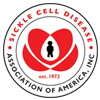Trusted Resources: Evidence & Education
Scientific literature and patient education texts
Characterization of opioid use in sickle cell disease
source: Pharmacoepidemiology and Drug Safety journal
year: 2017
authors: Han J, Zhou J, Saraf SL, Gordeuk VR, Calip GS
summary/abstract:PURPOSE:
Opioid analgesics are commonly used to treat vaso-occlusive pain episodes in sickle cell disease (SCD), but comprehensive evidence characterizing opioid use in this patient population is limited. Our objective was to characterize opioid use patterns among SCD patients using a large nationwide database.
METHODS:
A large, US medical claims database was utilized to identify a cohort of 3882 SCD patients, and characteristics of opioid use were analyzed. Clinical variables including age, gender, medication use, health care utilization, and medical history were evaluated for correlations with opioid use.
RESULTS:
Forty percent of patients took opioid medications during a 12-month span, and the prevalence of any opioid use was highest for 20 to 29-year-old patients (58%). The median daily opioid dose was 1.85 mg (interquartile range: 0.62-10.68 mg) oral morphine equivalents (OME). While most opioid users took between 0 and 5 mg OME daily, 3% of pediatric patients and 23% of adult patients used more than 30-mg OME daily. High-dose opioid use was associated with older age, hydroxyurea therapy, nonsteroidal anti-inflammatory drug (NSAID) use, and frequent inpatient hospitalizations. In multivariable-adjusted analyses, patients with vaso-occlusive complications such as pain crisis (OR = 3.8, 95% CI 2.7-5.3) and avascular necrosis (AVN) (OR = 3.7, 95% CI 2.7-5.1) were associated with high-dose opioid use.
CONCLUSIONS:
Our study showed that only 40% SCD patients were on opioid analgesics during a 12-month span. However, a non-trivial number of patients used a much higher dose of opioids despite a relatively low average daily opioid dose among SCD patients, particularly with vaso-occlusive complications.
DOI: 10.1002/pds.4291
read more full text
Related Content
-
Everyday Heroes: A view beyond the bloodIf you’re familiar with the American...
-
GlycoMimetics Announces Pricing of Public Offering of Common StockGlycoMimetics, Inc. (NASDAQ: GLYC), a cl...
-
William Owen, MDDr. William Owen is a pediatric hematolo...
-
Boston public schools agree to recognize sickle cell disease as disabilityThe Boston school system has agreed to r...
-
The challenges of being a caregiver to my cousin with sickle cellWhen I embarked on this journey as a c...
-
Georgia Universities Join NIH-funded National Study of Bone Marrow Transplant for SCDThe Medical College of Georgia (MCG) and...
-
Pierrette (P) Mimi Poinsett, MDDr. Pierrette Mimi Poinsett is a physici...
To improve your experience on this site, we use cookies. This includes cookies essential for the basic functioning of our website, cookies for analytics purposes, and cookies enabling us to personalize site content. By clicking on 'Accept' or any content on this site, you agree that cookies can be placed. You may adjust your browser's cookie settings to suit your preferences. More Information
The cookie settings on this website are set to "allow cookies" to give you the best browsing experience possible. If you continue to use this website without changing your cookie settings or you click "Accept" below then you are consenting to this.




 +myBinder
+myBinder
